Second Life LSL
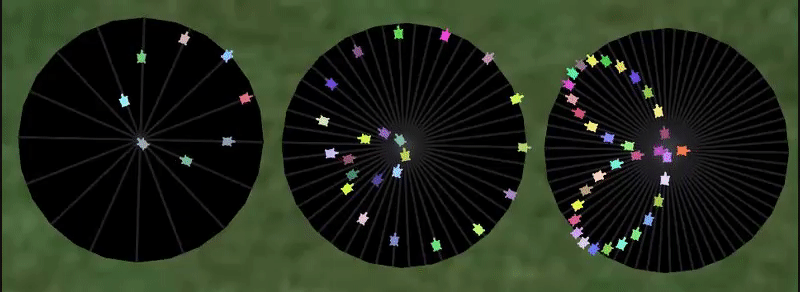 start of turtle alpha image (right click below to save image)
start of turtle alpha image (right click below to save image)

end of turtle alpha image (right click above to save image)
building the object:
make a root prim cylinder size <1, 1, 0.01> slice 0.49, 0.51, color <0, 0, 0>
make the description of this cylinder "8,1,1,1" without the quotes (very important)
make a cylinder, name it "cyl", color <0.25, 0.25, 0.25> alpha 0.5
duplicate the cyl 48 times
make a box, name it "sphere", color <1, 1, 1> transparency 100 except for the top transparency 0
put your turtle texture on face 0 of the box, turtle should face +x
duplicate the box 48 times
select all the boxes and the cylinders, make sure to select the root cylinder last, link (control L)
put these 2 scripts in the root:
//script named "dialog"
default
{
state_entry()
{
}
link_message(integer link, integer num, string msg, key id)
{
list msgs = llCSV2List(msg);
key agent = (key)llList2String(msgs, 0);
string prompt = llList2String(msgs, 1);
integer chan = (integer)llList2String(msgs, 2);
msgs = llDeleteSubList(msgs, 0, 2);
llDialog(agent, prompt, msgs, chan);
}
}
//script named "radial animation"
float interval = 0.1;
float originalsize = 1.0;
float rate = 5;
integer maxpoints = 48;
integer points = 23; //1 to 48
integer multiplier = 15;
integer lines;
string url = "https://codegolf.stackexchange.com/questions/34887/make-a-circle-illusion-animation/34891";
list cylinders;
list spheres;
float angle;
integer running;
integer chan;
integer lh;
desc(integer on)
{
if(on)
{
string desc =
(string)points + "," +
(string)multiplier + "," +
(string)running + "," +
(string)lines
;
llSetLinkPrimitiveParamsFast(1, [PRIM_DESC, desc]);
}
else
{
list params = llCSV2List(llList2String(llGetLinkPrimitiveParams(1, [PRIM_DESC]), 0));
points = (integer)llList2String(params, 0);
multiplier = (integer)llList2String(params, 1);
running = (integer)llList2String(params, 2);
lines = (integer)llList2String(params, 3);
}
}
init()
{
llSetLinkPrimitiveParamsFast(LINK_ALL_OTHERS, [PRIM_POS_LOCAL, ZERO_VECTOR,
PRIM_COLOR, ALL_SIDES, <1, 1, 1>, 0]);
integer num = llGetNumberOfPrims();
integer i;
for(i = 2; i <= num; i++)
{
string name = llGetLinkName(i);
if(name == "cyl")
cylinders += [i];
else if(name == "sphere")
spheres += [i];
}
vector size = llGetScale();
float scale = size.x/originalsize;
float r = size.x/4;
vector cylindersize = <0.01*scale, 0.01*scale, r*4>;
float arc = 180.0/points;
for(i = 0; i < points; i++)
{
float angle = i*arc;
rotation rot = llEuler2Rot(<0, 90, 0>*DEG_TO_RAD)*llEuler2Rot(<0, 0, angle>*DEG_TO_RAD);
integer cyl = llList2Integer(cylinders, i);
integer sphere = llList2Integer(spheres, i);
llSetLinkPrimitiveParamsFast(1, [PRIM_LINK_TARGET, cyl, PRIM_POS_LOCAL, ZERO_VECTOR, PRIM_ROT_LOCAL, rot, PRIM_SIZE, cylindersize, PRIM_COLOR, ALL_SIDES, <0.25, 0.25, 0.25>, 0.5*lines,
PRIM_LINK_TARGET, sphere, PRIM_COLOR, ALL_SIDES, <0.25 + llFrand(0.75), 0.25 + llFrand(0.75), 0.25 + llFrand(0.75)>, 1
]);
}
}
run()
{
vector size = llGetScale();
float scale = size.x/originalsize;
float r = size.x/2;
vector spheresize = <0.06, 0.06, 0.02>*scale;
float arc = 180.0/points;
list params;
integer i;
for(i = 0; i < points; i++)
{
float x = r*llCos((angle + i*arc*multiplier)*DEG_TO_RAD);
vector pos = <x, 0, 0>*llEuler2Rot(<0, 0, i*arc>*DEG_TO_RAD);
rotation rot = llEuler2Rot(<0, 0, i*arc>*DEG_TO_RAD);
integer link = llList2Integer(spheres, i);
params += [PRIM_LINK_TARGET, link, PRIM_POS_LOCAL, pos,
PRIM_ROT_LOCAL, rot,
PRIM_SIZE, spheresize
//PRIM_COLOR, ALL_SIDES, <1, 1, 1>, 1
];
}
llSetLinkPrimitiveParamsFast(1, params);
}
dialog(key id)
{
string runningstring;
if(running)
runningstring = "notrunning";
else
runningstring = "running";
string linesstring;
if(lines)
linesstring = "nolines";
else
linesstring = "lines";
string prompt = "\npoints: " + (string)points + "\nmultiplier: " + (string)multiplier;
string buttons = runningstring + ",points+,points-,reset,multiplier+,multiplier-," + linesstring + ",www";
llMessageLinked(1, 0, (string)id + "," + prompt + "," + (string)chan + "," + buttons, "");
//llDialog(id, prompt, llCSV2List(buttons), chan);
}
default
{
state_entry()
{
chan = (integer)("0x" + llGetSubString((string)llGetKey(), -8, -1));
lh = llListen(chan, "", "", "");
desc(FALSE);
init();
run();
llSetTimerEvent(interval);
}
on_rez(integer param)
{
llListenRemove(lh);
chan = (integer)("0x" + llGetSubString((string)llGetKey(), -8, -1));
lh = llListen(chan, "", "", "");
}
touch_start(integer total_number)
{
key id = llDetectedKey(0);
dialog(id);
}
timer()
{
if(!running)
return;
angle += rate;
if(angle > 360)
angle -= 360;
else if(angle < 0)
angle += 360;
run();
}
listen(integer channel, string name, key id, string msg)
{
if(msg == "points+")
{
if(points < maxpoints)
{
points++;
desc(TRUE);
llResetScript();
}
}
else if(msg == "points-")
{
if(points > 0)
{
points--;
desc(TRUE);
llResetScript();
}
}
else if(msg == "multiplier+")
{
multiplier++;
desc(TRUE);
}
else if(msg == "multiplier-")
{
multiplier--;
desc(TRUE);
}
else if(msg == "running")
{
running = TRUE;
desc(TRUE);
}
else if(msg == "notrunning")
{
running = FALSE;
desc(TRUE);
}
else if(msg == "lines")
{
lines = TRUE;
desc(TRUE);
llResetScript();
}
else if(msg == "nolines")
{
lines = FALSE;
desc(TRUE);
llResetScript();
}
else if(msg == "reset")
llResetScript();
else if(msg == "www")
llRegionSayTo(id, 0, url);
dialog(id);
}
}
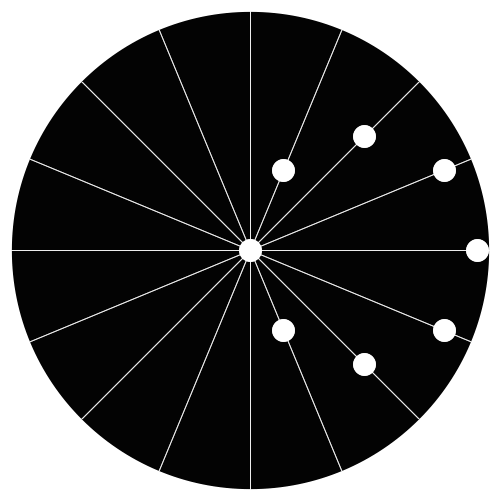
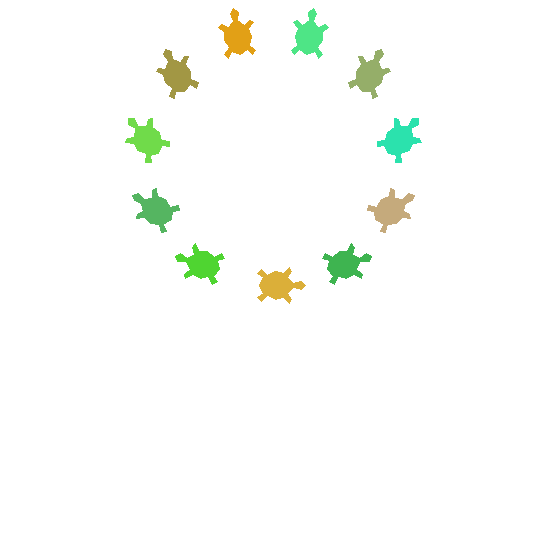
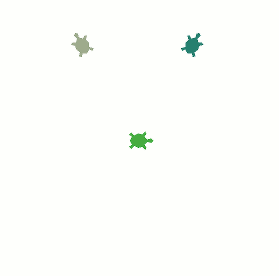
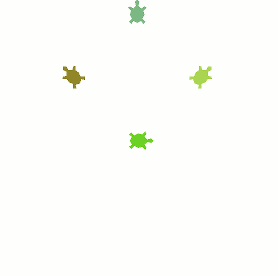
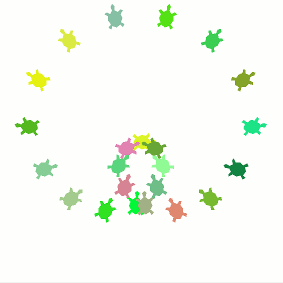
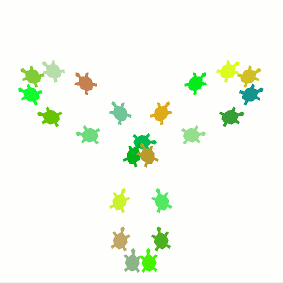

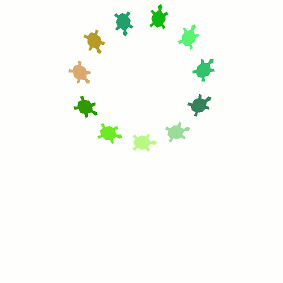

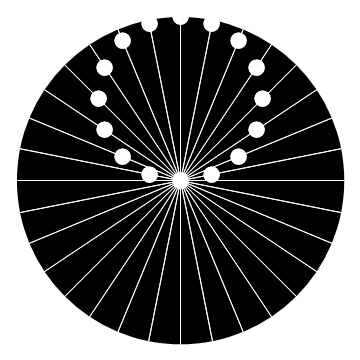
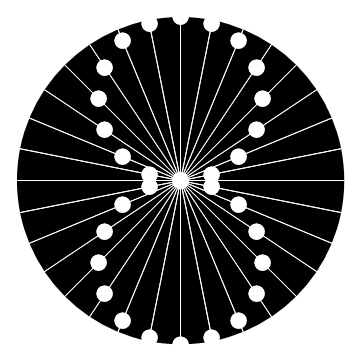
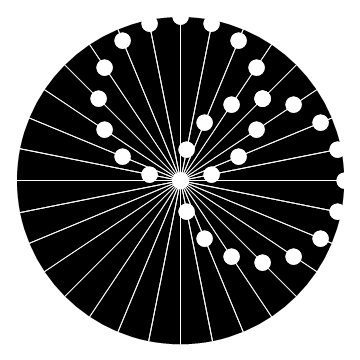
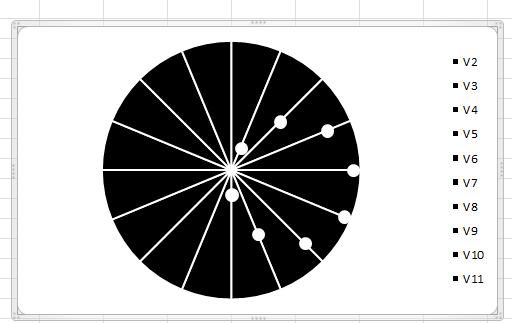


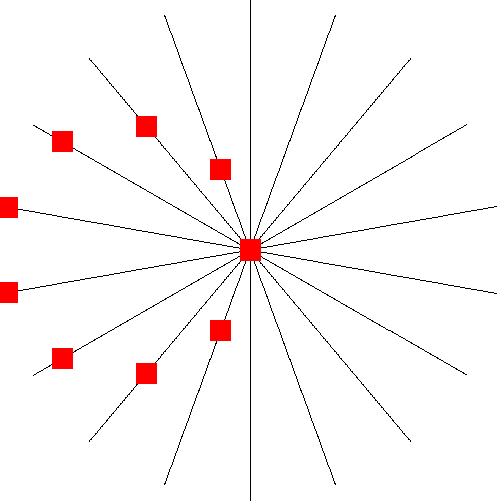
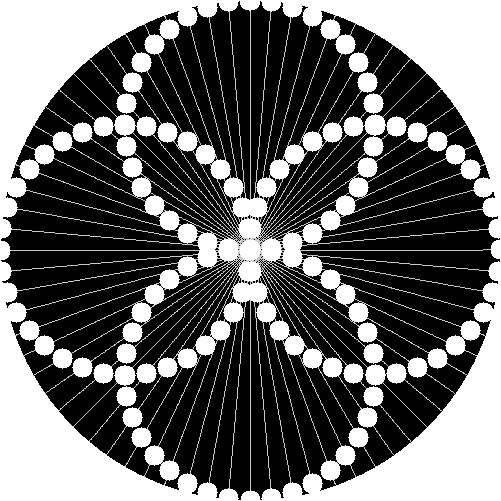
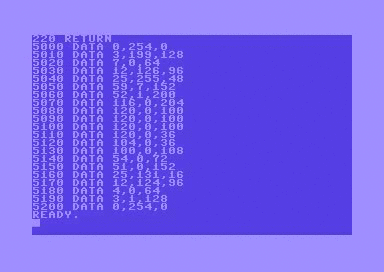

 start of turtle alpha image (right click below to save image)
start of turtle alpha image (right click below to save image)
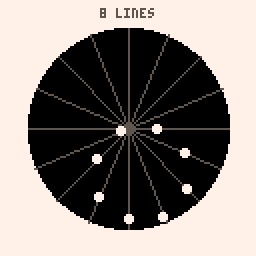
"winner is the most upvoted valid after 7 days". So if someone posts something every 6 days until the stars die, we have no winner? – Kevin L – 2014-07-21T19:52:03.220
3@KevinL that is unlikely to happen and I don't think those 15 extra rep are that important compared to all the upvotes you'd get from this question being bumped to the top every 6 days. – Martin Ender – 2014-07-21T20:09:28.603
@KevinL: If that happens, we will have a winner after the stars die. – Jonathan Pullano – 2014-07-22T17:18:47.193
look closely, and focus on any one of the balls. They are just oscillating along one of their pass axis. – user3459110 – 2014-07-23T04:30:26.677
1Sometimes I wonder if some people do these just to get a job done... – Daniel says Reinstate Monica – 2014-07-23T19:50:53.273
@DantheMan I really enjoyed this question... I think I know what you mean - that need to do something that can be finished quickly for a sense of completion. – trichoplax – 2014-07-23T23:21:45.030
3"It looks like the points rotating inside of the circle, but they are actually just moving in straight lines.", or, maybe they are really rotating inside a circle and appear to move in straight lines ... – coredump – 2014-07-26T21:13:39.883
1Can't.. get this animation.. out of my mind.. especially the 3-point version! – Thomas – 2014-07-28T12:32:07.133